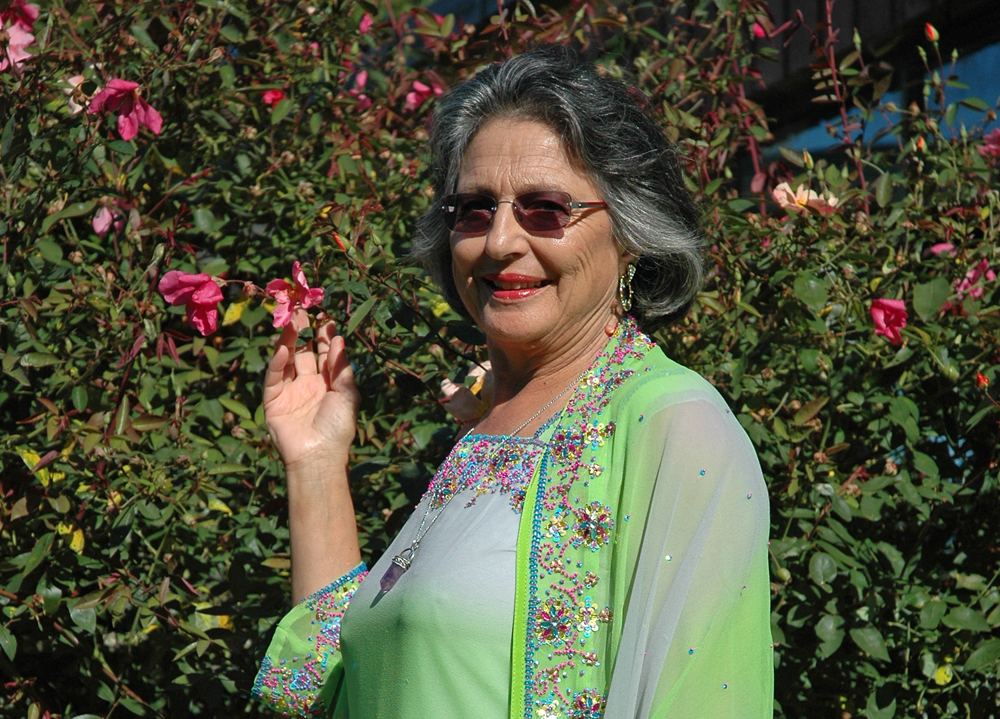She has no memory of her birth mother or father but says: "When I was a little girl in the nursery, I can remember seeing this woman coming towards me, and she was wearing a white sari, and her hair was done in a bun … and all I could think was, 'Oh, what a beautiful lady'. And that lady came straight over to me, and she got on a knee and gave me a hug and a kiss. She put some sweets in my hand, stroked my face, then walked away."
She remembers when she was 10 years old the home's 'Aunty' first discussing her moving to New Zealand: “Do you remember Mr. and Mrs. Dick?” I said, 'Yes'. But I didn’t really, I just said yes. And she said, 'Well, they would like you to go New Zealand and be their little girl'."
In 1955, aged 12, she left Dr Graham’s Home to move to New Zealand to live with her new family in Remuera, Auckland.
She recalls arriving at her new home with views out to Rangitoto: “It was just such a beautiful home, with white cotton runners on the floor at the entrance.”

After spending close to ten years in an orphanage in India, Parvati was adopted and moved to New Zealand in 1955, aged 12.
Parvarti says despite being brought up in a Western manner in the children's home, moving to New Zealand was a "huge shock".
She attended Remuera Intermediate School, which she remembers as two very happy years, followed by two unhappy years at Epsom Girls’ Grammar.
"I had an Australian teacher, and she took one look at me and disliked me on sight… I learned about what they called colour prejudice in those days.
"She used to make fun of my accent, because it was very strong, and again I was the only dark one, there were no Indians, or Maori. She was a nasty lady. I used to do everything to try to make her like me, because I didn’t want to be abandoned again, so I was always this bright happy girl."
Parvati left school as soon as she could and worked as a hairdresser, then as a receptionist, and in her most exciting career change she was employed by TEAL as an air stewardess.
"We trained on the Electras and the brand new DC8 aircraft arrived within that first year. I worked on the second flight to Honolulu and Los Angeles. So my work was just... Fantastic! And we wore this elegant TEAL uniform with a very smart hat."
It was via her connection to Dr Graham’s Homes that I met Parvati, through an Anglo-Indian brother and sister I also interviewed whose father had come directly from the school to New Zealand on Dr Graham’s ‘colonising scheme’. The sister, Jane McCabe, researched the more than 120 young men and women, referred to as ‘Kalimpong Kids’, who came to New Zealand on the scheme.
Forty-two years after leaving the children's home in India, encouraged by her Kiwi husband and two adult daughters, Parvati began responding to the eternal longing to find her family.
In doing so, she discovered that the woman in the white sari had been her mother, who had died shortly after.
She found that some of her paternal side of the family were right here in New Zealand, and others were in England. The quest then was to find her mother’s family, and to meet the brother she learned was still living in Assam. So, in 1996, she set out on a four month journey of discovery, starting with meeting her brother in Assam:
"I’ve been away from India for 42 years, and when I met my brother, of course, all he could say was, ‘Hello Sis,’ when I first saw him. But that’s another huge story."
Parvati is now a vivacious and active 72 year old who is a celebrant in the Auckland area, arranging and presiding over marriages, funerals and other rites of passage.
She exudes a joy of life and has great pride in her Indian heritage.
I learned that she was given her Indian name in 1995 by a close Indian friend, as she was finding out about her Indian maternal heritage. She says she wears the name with pride, in respect of her Mother, adding that ‘Nancy’ had never felt right.
By Dr Robyn Andrews, senior lecturer Massey University
Views expressed in this article are personal to the author and are not to be taken as representing those of the Asia New Zealand Foundation.


